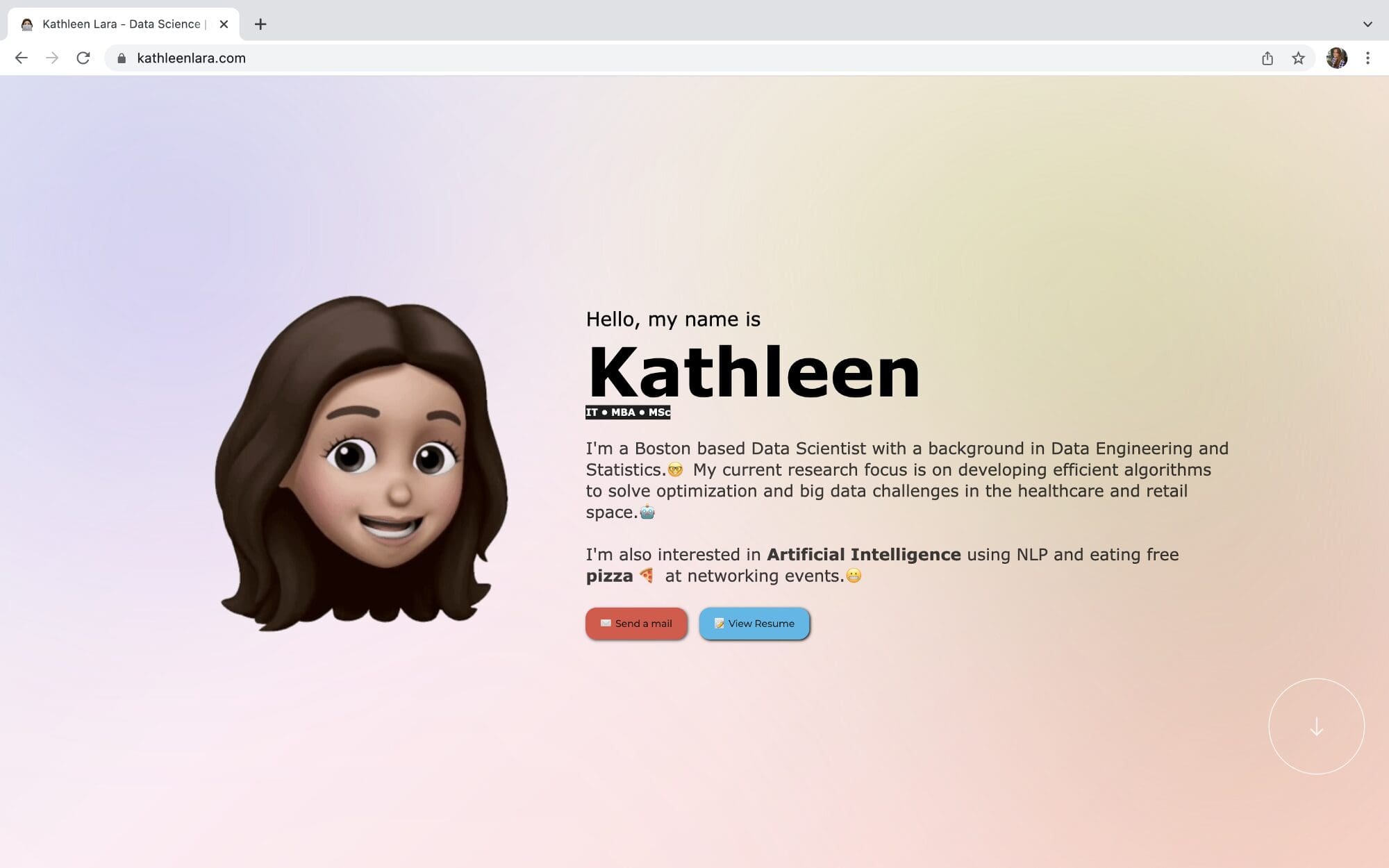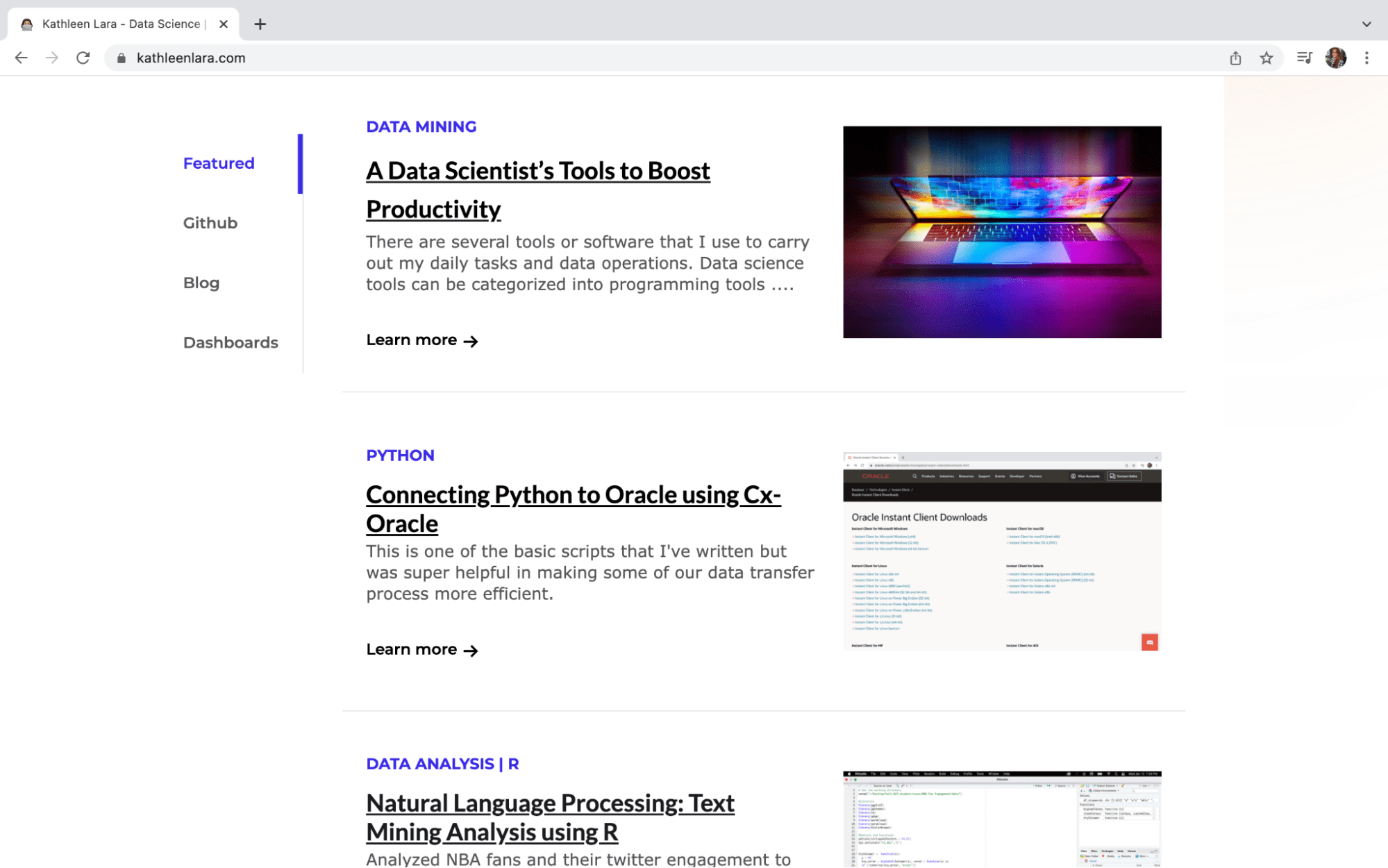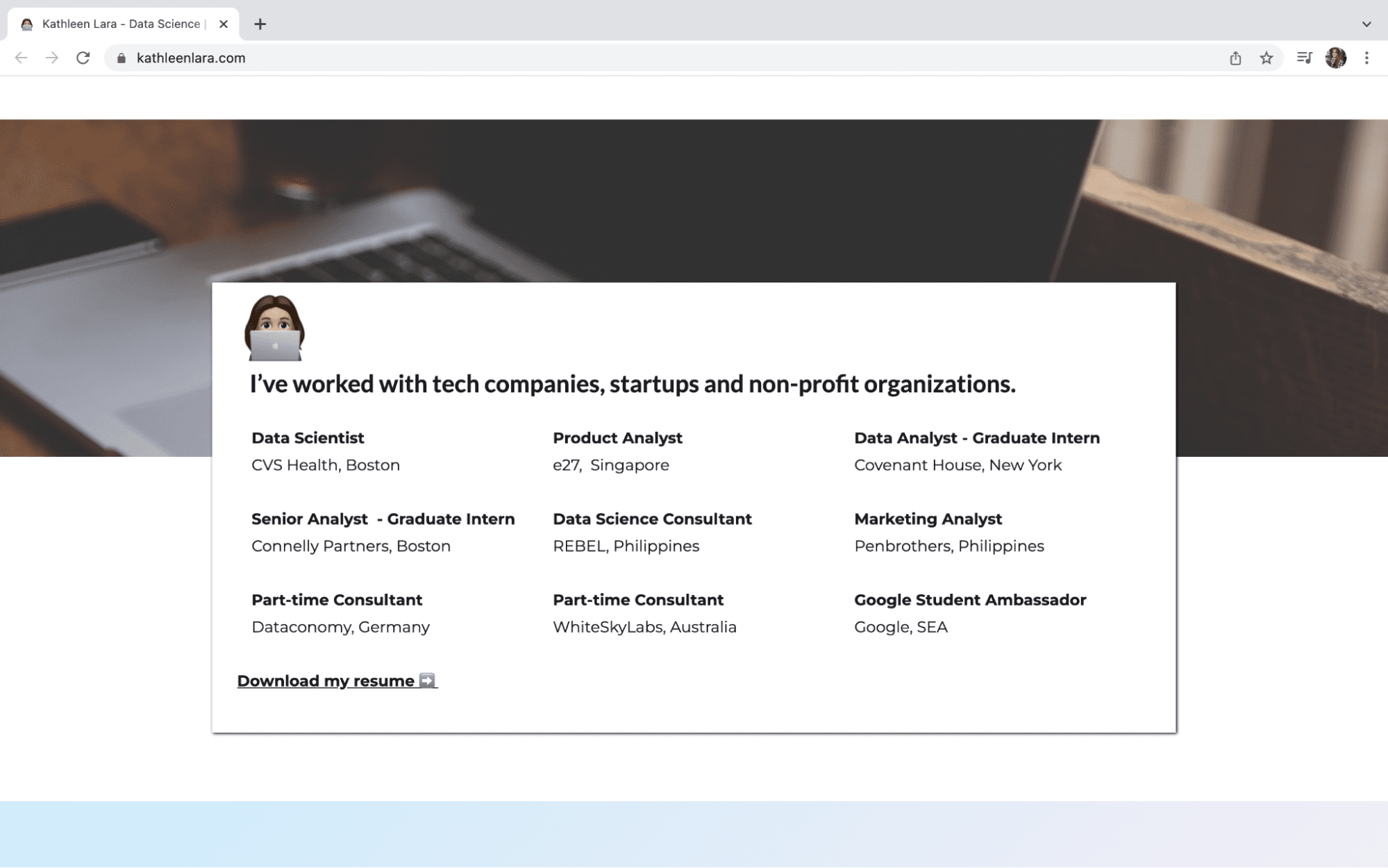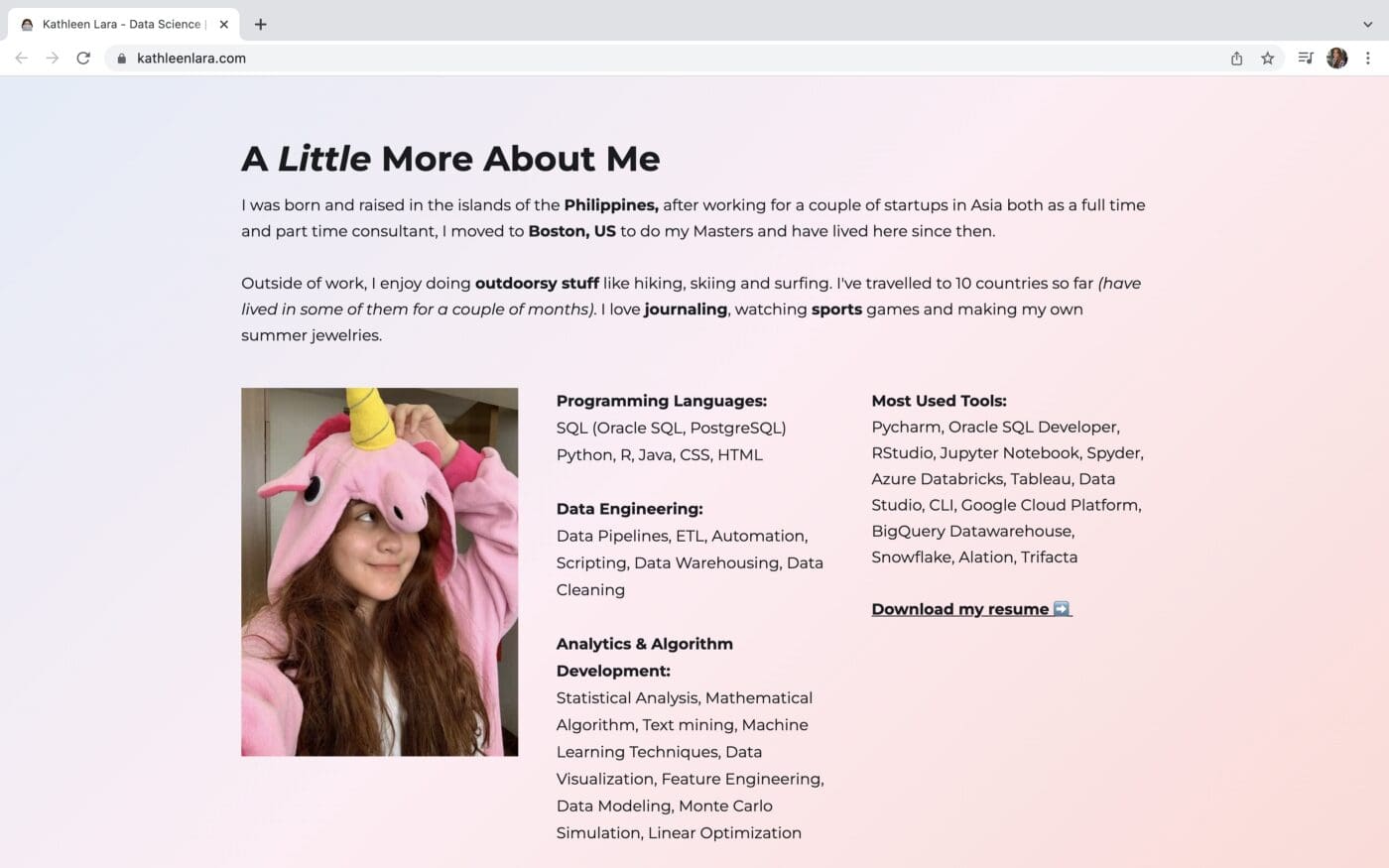How To Design Your Data Science Portfolio
Read this overview of how the author created a data science portfolio that stands out and gets noticed.
Having a well put-together portfolio is important to highlight your work and your ability to tell your story. A curated selection of your projects is the best way to showcase your expertise and share your experience.
I personally had challenges consolidating my projects and also figuring out the best way to share my passion. Data science and engineering projects are usually vague and can be difficult to present which in my case, comes in two flavors, code and content. I have my source codes sitting on my Github page and my write-ups on my medium or somewhere on the web .
So I created a personal five section portfolio. Here’s my thought process for every section.
Introduction

kathleenlara.com: Introduction Section
I designed this section imagining that I’m giving someone an elevator pitch of who I am and what I do. I added the GIF as a representation of myself and to give an interactive feeling. (I guess I could have just added a GIF of myself but at this point, my confidence level is not there yet!)
As for the background, initially it was white. I usually use minimal white colors for almost all my visuals because of its safe-feel-that-match-with anything kind of look. But then, I can’t be a creature of habit all the time so I decided to be adventurous and go all in with pastel gradients.
After that quick introduction, there are three things a visitor would do as a next step. Similar to the options you are given in the real world — when you meet someone, you either aggressively give them your contact or business card which represents the Send a Mail button (I know I said it’s aggressive but it’s totally fine to send me one anyway, I love reading emails!), you can start jumping right to it and dig for more details by looking at the resume or carry on with the get to know conversation and get a feel of the person by scrolling down to the portfolio more.
Projects

kathleenlara.com: Projects Section
Following up to that mini elevator pitch about myself and my interests, I designed this section to share more about what I’ve done. Within this section I categorized my projects. The very first one is the Featured category, this is for me to select and feature my favorite work. The other categories are related to coding, articles I wrote and my data visualizations.
Disclaimer: Most of the projects I worked on are confidential, and not meant to be shared which explains why I have limited projects listed for now. I’m currently trying to find time to do more personal research work.
I included purple tags to give a quick idea of what the projects are about. I’ve also added Learn more links at the bottom, and if you’ve noticed all of which opens a new tab when clicked. I’m very particular about this external tab because I want the viewer to keep the portfolio in the other tab so they can easily switch back to my page and explore the portfolio more after learning about a specific project.
Companies I’ve Worked With

kathleenlara.com: Companies I’ve worked with Section
I started this section with a one liner that sums up the type of companies I’ve worked with. My goal is to highlight my previous roles and to redirect the viewer to download my resume. I don’t want to overwhelm them with information which is why I skipped the JD bullet points.
A Little More About Me

kathleenlara.com: About Me
You might wonder — why put this at the bottom instead of highlighting more about myself at the very beginning? Well, in real life I noticed a pattern with how people communicate and interact at networking events. (I should put some flashy behavioral stats here, but I don’t have it so yes this is based on my personal experience ????). First, you ask about work, what they do and then after a bit of conversation exchange eventually you get more personal, which is why I placed this section at the bottom part.
So how did I decide on what personal things to share? This was actually one of the most difficult sections to write because I’m not used to sharing things about me and I feel like the activities I do outside of work aren't all that unique. I included the most basic things one would ask, including where I’m based at and what my hobbies are. I also added a cheeky photo which may be a bit unprofessional compared to the other sections but it gives the page more character (and I also wanted to show my fun side).
I wrote down my skills and my most used tools to give an idea of what my everyday work looks like. This was also challenging because I didn’t want to come off as a Kat of All Trades that can do a bit of everything from data engineering to full on data analysis, but I think these are some of the skills and tools that a strong Data Scientist should have to be more efficient and productive with work — one must know how to get down and dirty with data. I’m also a work in progress but I’m always trying to learn new things.
Get In Touch

kathleenlara.com: Get In Touch
There’s two options to get in touch with me, either copy my email address or fill up that form. And yes, the emails that I’ve made public are intended for only my public accounts (and I have different email address for more private accounts).
Portfolio Improvements
I’m not big on web development and I wish I have more time to work on how I can really improve my portfolio — but again web design is not my niche and my main goal is to just showcase my work. I started using Webflow to save time on development and I just added my own chunks of CSS and Javascript codes for extra features. Webflow also made it easier for me to make the website device responsive. There’s some costs associated with it and it requires a wee bit of UI / UX development knowledge, however there are other options like Square Space or Wix that might be more friendly for users who have no coding or development experience.
Overall for me, it took a weekend to build the website with the content and sketch already in place. I have yet to optimize individual elements of my portfolio to improve loading speed especially on mobile. I still have to add more projects into it or perhaps pick better ones to feature — but overall I’m happy with what I’ve built so far.
There’s no such thing as right or wrong way in building a portfolio, one piece of advice is to start thinking about how you want to tell your story and then start creating a framework from there.
Kathleen Lara (@itskathleenlara) is a Boston based Data Scientist with a background in Data Engineering and Statistics. Check out her website here.
